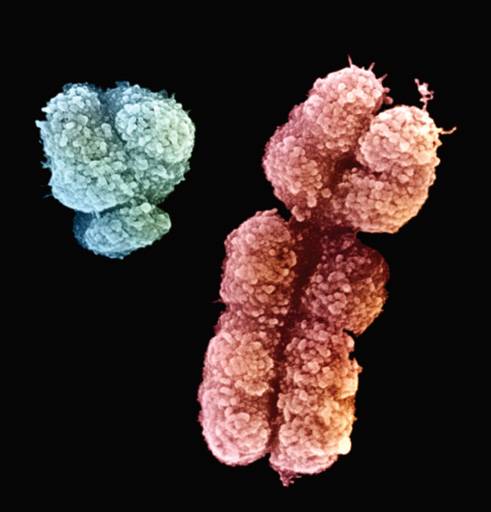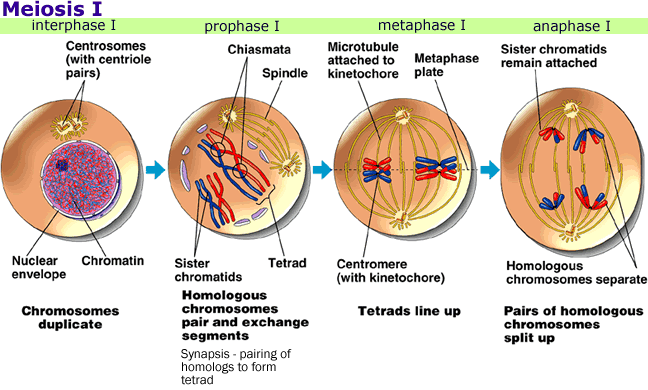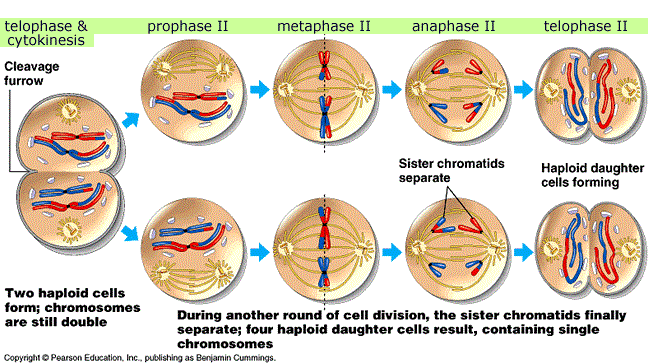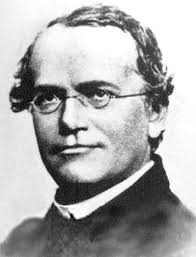| |
Topic 10: Genetics HL
Page history
last edited
by Darrell Sharp 11 years, 4 months ago
|

Human Sex Chromosomes, Biology, McDougal Littell, 2008.
|

Dihybrid Punnett Square, http://cccmkc.edu.hk/index.en.php
|
|
10.1 Meiosis
|
Modeling Meiosis Activity
Cartoon Guide to Genetics 1, 2, 3
Gonick, Larry, and Mark Wheelis. The Cartoon Guide to Genetics. New York, NY: Collins Reference, 2007. Print.
|
|
10.1.1 Describe the behaviour of the chromosomes in the phases of meiosis.
10.1.2 Outline the formation of chiasmata in the process of crossing over.
10.1.3 Explain how meiosis results in an effectively infinite genetic variety in gametes through crossing over in prophase I and random orientation in metaphase I.
Meiosis Simulation

Meiosis II

http://www.biologycorner.com/APbiology/inheritance/10-1_meiosis.html
Chiasmata

Sadava, D. et al. Life: The Science of Biology, 8th ed
|
DNA is replicated before meiosis starts
Meiosis I - key points: crossing over and independent assortment
Prophase I
- Chromosomes condense - "supercoiling"
- Homologous chomosomes make pairs
- Chiasmata form - positions where non-sister chromatids cross over (singular: chiasma)
- Nuclear membrane breaks down
- Spindle fibers attach to centromeres
Metaphase I
- Homologous pairs move to the middle of the cell
- Each pair lines up randomly - Mendel called this "independent assortment"
- Every time meiosis happens the pairs line up differently
Anaphase I
- Spindle fibers separate homologous pairs
Telophase I and Cytokinesis
- Spindle fibers break down
- Cytoplasm and plasma membrane are divided into two cells
- In some species, new nuclear membranes form
Result: two haploid cells
Meiosis II - key point: sister chomatids are separated
Prohpase II
- Spindle fibers attach to centromeres
Metaphase II
- Chromosomes line up individually in the middle of the cell
Anaphase II
- Spindle fibers separate suster chromatids
Telophase II and Cytokinesis
- Spindle fibers break down
- New nuclear membranes form
- Cytoplasm and plasma membrane are divided into two cells
Result: four unique haploid cells
Important Ideas
Crossing over and independent assortment create unique gametes.
- Because of crossing over, the four chromatids of homologous chomosome pairs are different
- Because of independent assortment, the result of meiosis is different every time it happens
- = genetic variation in gametes
Random fertilization happens during sexual reproduction - one random sperm and one random egg meet and create one unique offspring.
Sexual reproduction's most important characteristic is its ability to create genetic variation in offspring and increase the evolutionary success of the species.
Thanks meiosis and random fertilization!
|
|
10.1.4 State Mendel’s law of independent assortment.
10.1.5 Explain the relationship between Mendel’s law of independent assortment and meiosis.

|
Mendel observed the inheritance of many traits in his pea plants.
The inheritance of one trait was not connected to the inheritance of another trait.
For example, seed color could be yellow or green, and seed shape could be round or wrinkled.
The inheritance of seed color did not affect the inheritance of seed shape.
The offspring could have yellow and round seeds, yellow and wrinkled seeds, green and round seeds, or green and wrinkled seeds.
From these observations, Mendel wrote his Law of Independent Assortment which predicted the random assortment of homologous chromosomes during metaphase I of meiosis !!!!
Why can't I be more like Mendel?
|
10.2 Dihybrid crosses and gene linkage
Homework Questions
|
Dihybrid crosses follow the inheritance pattern of two traits.
(Di- = two)
In the following cross, two traits of each parent are observed:
1) seed color: Y=yellow / y=green
2) seed shape: R=round / r=wrinkled
P1: Phenotypes = Yellow/Round X Green/Wrinkled
Genotypes = YYRR X yyrr
F1: Phenotypes = 100% Yellow/Round
Genotypes = 100% YyRr
Yellow/Round X Yellow/Round
YyRr X YyRr
F2: Phenotypes = 9 Yellow/Round
3 Yellow/Wrinkled
3 Green/Round
1 Green/Wrinkled
Genotypes = ?
9:3:3:1 ratio

http://cccmkc.edu.hk/index.en.php
|
|
10.2.1 Calculate and predict the genotypic and phenotypic ratio of offspring of dihybrid crosses involving unlinked autosomal genes.
|
Practice Problems
Write the genotypic and phenotypic ratios for the following crosses:
Alleles
A = long wings
a = short wings
B = wide beak
b = thin beak
Crosses
AABB X aabb
aaBB X AAbb
AaBb X AaBb
AaBB X Aabb
Determine the genotype of a long winged, wide-beaked bird.
It could be AABB or AaBb. Use a testcross.
|
|
10.2.2 Distinguish between autosomes and sex chromosomes.
|
Autosomes are chromosomes that do not determine male or female characteristics.
Sex chromosomes have genes for determining male or female characteristics.
|
|
10.2.3 Explain how crossing over between non-sister chromatids of a homologous pair in prophase I can result in an exchange of alleles.
|
|
|
10.2.4 Define linkage group.
|
Linkage groups are genes that are on the same chromosome.
They do not separate by independent assortment - genes on different chromosomes do separate randomly during independent assortment.
They can separate by crossing over.
Studying how often linkage groups separate can show where the genes are located on the chromosome.
|
|
10.2.5 Explain an example of a cross between two linked genes.
Alleles are usually shown side by side in dihybrid crosses, for example, TtBb. In representing crosses involving linkage, it is more common to show them as vertical pairs, for example

|
Recombinant: An organism, cell, or chromosome that is the result of crossing over ("re-combined")
Linkage groups are written horizontally to show which alleles are on the same chromosome:

T and B are on one chromosome; t and b are on the other homologous chromosome.
|
|
10.2.6 Identify which of the offspring are recombinants in a dihybrid cross involving linked genes.
In a test cross of
 the recombinants will be
 and

|
Usually linked genes are inherited together.
If crossing over occurs between linked genes, the result is a recombinant.
In a testcross, TtBb X ttbb usually produces offspring like TtBb and ttbb.
Same cross written differently:
TB tb TB tb
__ X __ usually produces offspring like __ and __
tb tb tb tb
But if crossing over occurs, then the same cross can produce recombinants:
TB tb Tb tB
__ X __ produces recombinant offspring like __ and __
tb tb tb tb
Without crossing over, a TtBb parent produces TB and tb gametes.
With crossing over, a TtBb parent produces Tb and tB gametes.
Recombinants can be identified because they
- occur less frequently
- show unexpected phenotypes
- do not follow the expected ratios, like 3:1 or 9:3:3:1
|
|
10.3 Polygenic inheritance
 
|
 
|
|
10.3.1 Define polygenic inheritance.
|
Polygenic inheritance: more than one gene controls the trait. ("poly" = many, "genic" = genes)
Examples:
- Human skin color
- Human hair color
- Human eye color
|
|
10.3.2 Explain that polygenic inheritance can contribute to continuous variation using two examples, one of which must be human skin colour.
|
Human skin color is controlled by at least 4 genes.
This Punnett square shows the possible variation for two parents that are heterozygous for 3 skin color genes.

This variation creates a continuous range of phenotypes.

|
Topic 10: Genetics HL
|
|
Tip: To turn text into a link, highlight the text, then click on a page or file from the list above.
|
|
|
Comments (0)
You don't have permission to comment on this page.